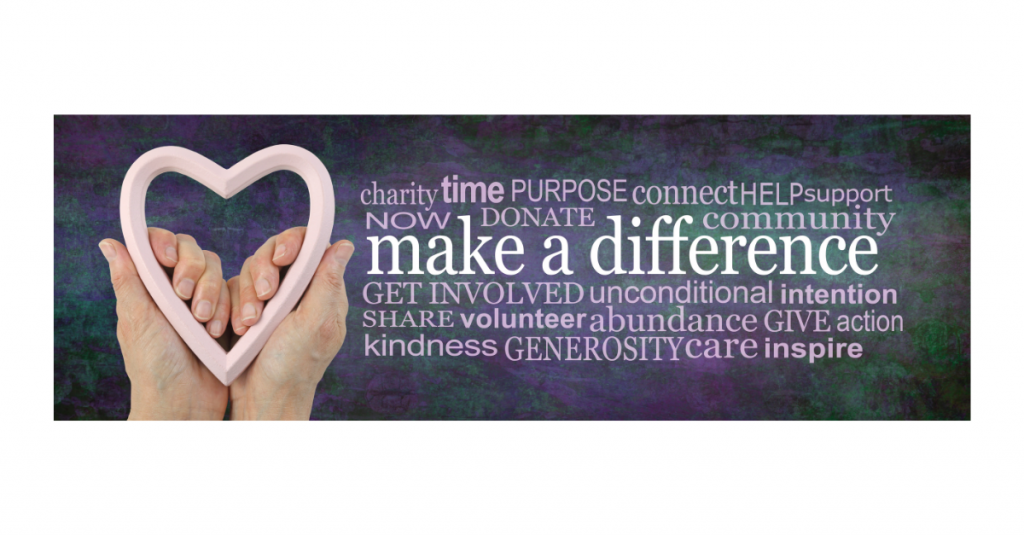
This month and next, we will focus on the topic of major gift fundraising for smaller nonprofits. If you are new to major gift fundraising or if you are looking for ways to improve your program, we encourage you to subscribe to this newsletter and follow along. We hope to provide you with the information and resources you need to be successful.
Major gift fundraising is important for smaller nonprofits because it can provide a significant source of unrestricted funding. This type of funding can be used to support a variety of initiatives, such as new program development, capital campaigns, and general operating expenses.
- What is major gift fundraising?
- Tips for smaller nonprofits that are new to major gift fundraising
- Why are major gifts important to your organization?
What is major gift fundraising?
The definition of major gifts differs from one organization to another and depends on your pool of prospective and active donors. A donor’s giving potential can be determined by the CAP rating: the Capacity, Affinity, and Propensity to give.
Tips for smaller nonprofits that are new to major gift fundraising:
- Start small. Don’t try to raise too much money from too many donors right away. Instead, focus on building relationships with a small group of potential donors who are passionate about your cause.
- Be patient. Major gift fundraising takes time and effort. Don’t expect to see results overnight.
- Be personal. Major gift fundraising is all about relationships. Take the time to get to know your donors and their interests.
- Be transparent. Be upfront with your donors about how you will use their gifts.
- Be grateful. Thank your donors for their support and keep them updated on your organization’s progress.
Major gift fundraising can be a challenging but rewarding experience for smaller nonprofits. By following the tips above, you can increase your chances of success.
Why are major gifts important to your organization?
Your nonprofit can boost its fundraising efforts when you take the time to cultivate, solicit, and steward your major gift donors. The size of the gift is important for several reasons, and differentiating major gifts is a crucial strategy in fundraising and donor relationship management for several reasons:
1. Tailored Cultivation and Stewardship: Donors who make major gifts typically have different motivations, interests, and giving capacities compared to other donors. In the age of Amazon and Netflix customizing your consumer experience, donors expect that you tailor your communication and engagement strategies to better meet their specific needs and preferences. This can include personalized stewardship efforts, events, and updates on the impact of their gifts.
2. Maximizing Giving Potential: High net worth individuals often have the capacity to give more. By understanding their individual giving capacity and philanthropic interests, you can identify opportunities to solicit larger gifts, increasing the overall financial support for your organization.
3. Building Stronger Relationships: By segmenting major donors, you can engage with them on a deeper level, showing that you understand their interests and values, which can foster a stronger emotional connection and a long term loyalty to your cause.
4. Efficient Resource Allocation: Major gift fundraising can be resource-intensive, including staff time and other expenses. By segmenting major donors based on factors like giving history, affinity, or engagement level, you can allocate your resources more efficiently, focusing your efforts where they are most likely to yield results.
5. Customized Communications: Different major donors may prefer different types of communication (e.g., email, phone calls, in-person meetings) or have different expectations regarding the frequency and content of your updates. Segmenting allows you to tailor your communication approach to match each donor’s preferences.
6. Strategic Planning: Segmenting major donors can help your organization’s strategic planning. For example, you can identify trends and patterns in major gift giving, such as which programs or initiatives attract the most support. This information can guide your organization’s priorities and fundraising strategies.
7. Diverse Engagement Opportunities: Major donors can be engaged in various ways, including advisory roles, volunteering, or participating in special events. Segmenting allows you to identify opportunities that align with each donor’s skills and interests, creating a more enriching experience for them.
